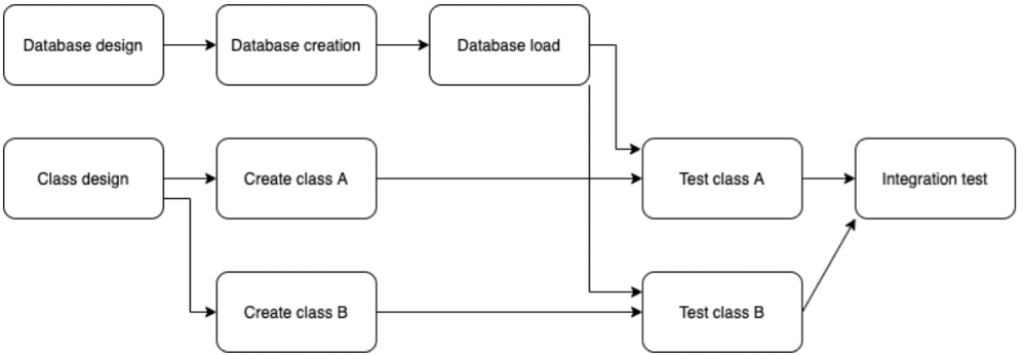11 Maintaining the Product Backlog
Some projects have a scheduled set of tasks to accomplish, and a dependency chart. The dependency chart is most often used in Waterfall and Spiral projects where one component will be relied on for another component to function. Here’s an example of such a chart:

This type of chart and scheduling shows which tasks have to be completed in order for the next task to be completed. There are also often annotations showing who is assigned to the task, estimated workload remaining, and already expended work, plus some coloration or shading to show at a glance which tasks have been completed.
In Agile projects, especially Scrum projects, things are generally built up a little at a time, so that (using the above example), just enough database design will occur to allow the database creation and load that Class A will need, so that those can be, to an extent, a single sprint’s worth of work. Because the work on a “thing” is done incrementally, rather than all at once, tasks tend not to rely on each other much. (On the other hand, these “things” need to be revisited to be flushed out on many occasions.) And so, in Agile projects, all that really needs to be kept track of (for scheduling purposes) is the “backlog”. The backlog consists of everything wanted, but not yet completed.

